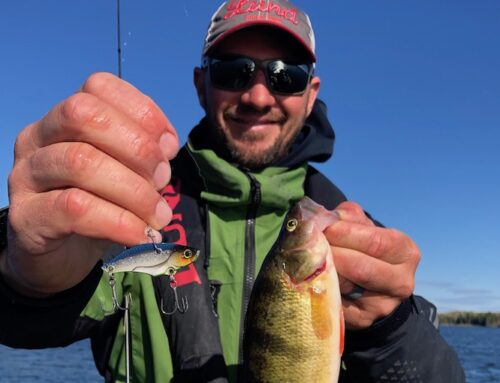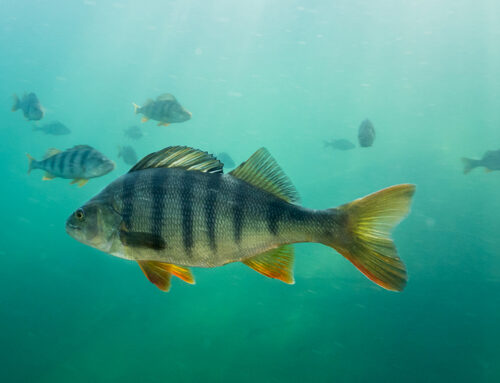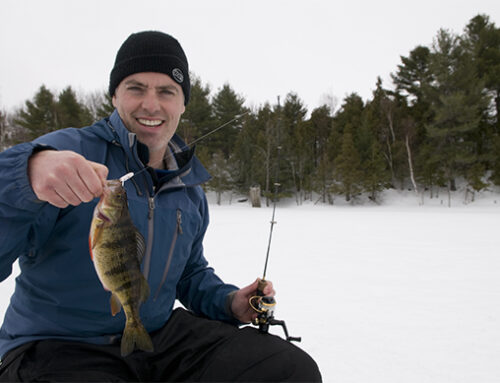Casting skills are an important thing for panfish anglers to master. It’s a challenge to propel light baits with accuracy, no matter the distance. Here are some pointers for launching lightweight lures, including the equipment to use and tactics to take.
A Balancing Act
Superior casting performance begins with a rod designed to handle the lure’s weight. Case in point: my light-powered spinning rods have ratings spanning 1⁄16 to 5⁄16 ounces, which cover the majority of the jigs and lures I cast for perch, crappie, and sunfish. Casting is smooth and undemanding with a balanced set-up. Action and length often comes down to individual preference. I like the responsiveness of a fast-action blank;a flick of the wrist is all it takes to cast light baits. Overall, it’s tough to go wrong with a 6- or 6 1⁄2-foot light-powered rod for most panfish presentations.
String Details
Long casts are advantageous when covering water and searching for fish. Using a slick superline will boost distances. Notables include Berkley NanoFil, PowerPro’s Super 8 Slick, and Sufix 832. Stick to 10-pound test or less. The lighter the line, the smaller its diameter, and the less friction there is with the reel spool and line guides. Properly filling spools also makes casting easier and boosts distance. Review the literature that comes with the reel for recommended capacities. The Achilles heel of light superline is its inability to hold bobber stops well. Stick with 4- to 6-pound test monofilament for float tactics. Or, if you still prefer superline, tie on a long mono leader
Entry Aware
How a lure hits the water is an important element of a cast. It should be subtle and natural to pique panfish interest, particularly in shallow water. To accomplish this, feather the line off the reel using your finger or palm as the bait approaches the target. This reduces momentum, parachutinga lure down instead of letting it smash into the water at full speed. Another method is to stop the lure just a few inches above the water, then pull it back slightly for a light touchdown. Skipping a lure along the surface at the end of the cast also slows its speed and mimics a fleeting baitfish. Use a low trajectory for both techniques. Each approach takes practice to master.
Hitch a Ride
Using a float or a casting bubble is a reliable way to lengthen casts with a light jig. The extra weight also allows a fly to be used, which is deadly for pannies. Longer rods deliver more control with this approach. A lob cast is best, while an aggressive snap cast is counterproductive. Try casting beyond the target and then swimming the presentation into the zone, as the rig has a loud touchdown
Good Mechanics
Except when fighting a headwind, flinging panfish sized baits should be effortless. If it’s labour intensive something’s wrong. In addition to unbalanced equipment, your body mechanics may be the culprit. Excessive swinging, over-rotating the upper body, improper weight transfer, poor timing, and overstraining are common casting errors. Solutions include focusing on proper form and remembering the golden rule of casting: let the rod do the work. Finally, always end a cast with the rod tip pointing at the target. It’s a small detail that dramatically improves accuracy.
This was first published in the March 2014 issue of Ontario OUT OF DOORS.







Leave A Comment